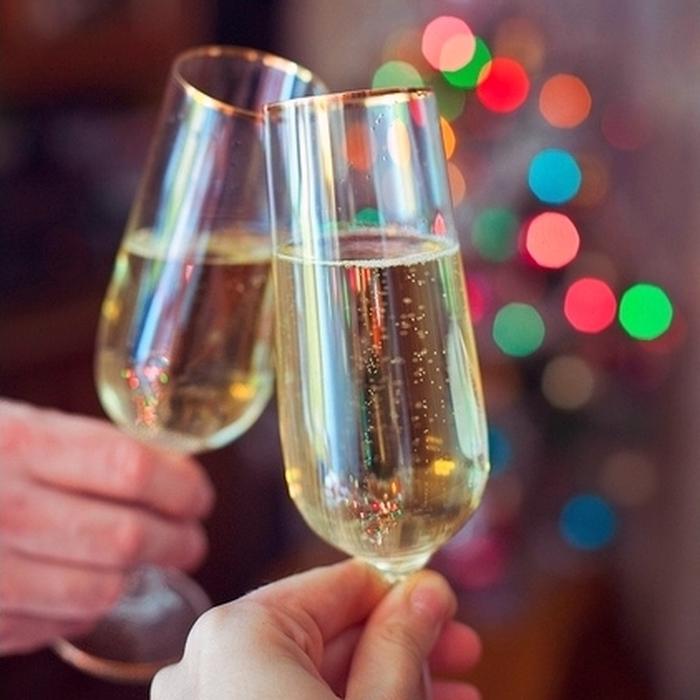
The celebration ringing in the New Year is an ideal time to pop open a bottle of champagne. But before you get to midnight, why not learn a little bit about that bubbly you’re sipping? Check out our quick guide to what’s in that glass of sparkling wine, plus some trivia to impress your fellow party-goers before the toasting begins.
What’s the difference between champagne and sparkling wine?
Champagne is actually the name of a region in France, and only sparkling wine grown and produced in this specific geographic area can technically claim the moniker. Of course, the term is widely used, at least verbally, to refer to sparkling wine, and there are even some wineries in the U.S that have been given permission to use “champagne” on their bottles. (The laws have become stricter in the past few year, though, on the use of the word for anything other than wines from Champagne, France.)
So, what other types are there?
Outside of Champagne, there are several French appellations that use the term Crémant. If you choose a sparkling wine from Spain, it’s likely to be a Cava. Italians love their bubbly and have quite a variety: Asti, Prosecco, and Lambrusco are among the most popular. The Germans call it Sekt and the Hungarians (you didn’t know Hungarians were into wine, did you?) use the term Pezsgo.
What kind of grapes are used in sparkling wine?
True champagne is typically a combination of Chardonnay, Pinot Noir, and Pinot Meunier grapes. And generally speaking, most other sparkling wines are also blends of white grapes, not strict varietals. But, like most things in the wine world, there are exceptions to this—the Australians do lovely sparkling Shiraz, which is both a varietal and a red!
How does a wine become sparkling?
All wine goes through a primary fermentation process to transform it from fancy grape juice into alcohol, but champagne goes through a second round, too. Specific techniques vary from winemaker to winemaker, but basically, the secondary fermentation process creates carbon dioxide and forces it back into the liquid, resulting in those beautiful bubbles (between 45 and 250 million in every bottle!).
Alternatively, some sparkling wines are created using the soda-pop method, where carbon dioxide is injected directly into the wine. (This is a much cheaper method, though, and is only used in lower-end wines.)
How sweet should you buy it?
Like their still counterparts, sparkling wines can range from the dry to the very sweet—and “what’s good” totally depends on your preference! Sparkling wines are given a sweetness label, which is determined by the amount of sugar in the wine. Brut nature, extra brut, and brut are the driest kinds. Extra dry or extra sec are next on the spectrum with a bit more sugar, followed by dry or sec and semi-dry or semi-sec. The sweetest of the lot are dulce, doux, or sweet.
These days, sparkling wines are considerably drier than they have been in the past. French monks, French royalty, and the upper echelons of English society are all credited with making sparkling wines centuries ago. It’s not known where exactly the first bubbly was bottled, but all the early wines were all much higher in sugar than those found today.
Most importantly, how do you crack open a bottle?
Since sparkling wines are carbonated, there’s a fair amount of pressure in the bottle. Most come with a wire cage wrapped around the cork, which keeps it firmly in place during aging and transportation.
When you’re ready to open a bottle, remove the wire, point the cork away from you (and your friends), and—holding on firmly—slowly begin turning the cork. You’ll feel the pressure inside the bottle naturally take over and ease the cork out—resulting in the pop! In the case that things don’t go quite so smoothly, and the cork shoots out quicker than expected, well, it’s a good thing you had the bottle pointed away from your pals, right?
Finally, pour some bubbly into a champagne flute (which helps retain the carbonation better than a traditional wine glass or shallow “coupe” glass), and enjoy! Cheers to a very, very happy New Year!